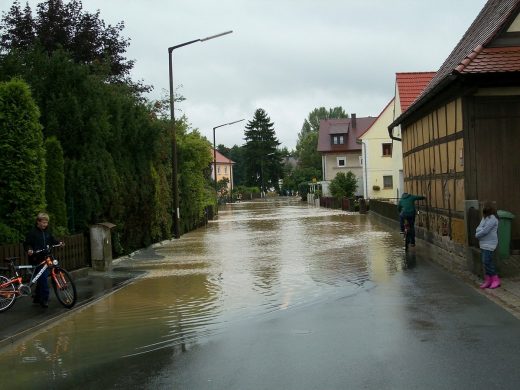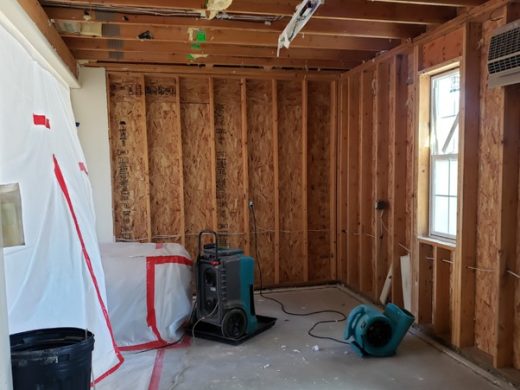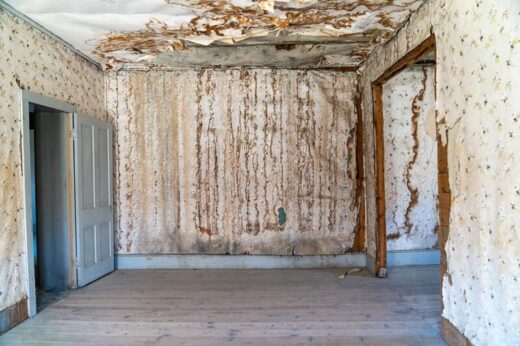Why does water damage lead to foundation repairs, Cleanup remediation guide, Homeowner property restoration advice
Why Does Water Damage Lead to Foundation Repairs Need?
9 September 2023
A home’s foundation, often hidden from view, is a cornerstone of its structural integrity. It’s the silent hero that bears the weight of your house and ensures its stability. Yet, this unsung hero is vulnerable to the insidious effects of water damage. This article will discuss the intricate connection between water damage and the need for foundation repairs. Understanding why water damage frequently leads to foundation issues is essential knowledge for homeowners, as it can help prevent costly repairs down the road.
What is Foundation Repair?
Before we move into the impact of water damage, it’s important to establish the significance of your home’s foundation. The foundation serves as the bedrock upon which your entire house stands. The structural base supports your home, ensuring it remains stable and secure. A robust foundation is essential for preserving your home’s structural integrity, making any compromise to it a matter of utmost concern.
Why Does Water Damage Often Lead to the Need for Foundation Repairs?
Water damage can indeed lead to the need for foundation repairs due to the following reasons:
- Soil Expansion and Contraction: Water can cause the soil around your home’s foundation to expand when it becomes saturated and shrink when it dries out. This constant cycle of soil expansion and contraction exerts pressure on the foundation walls, leading to cracks and structural issues.
- Hydrostatic Pressure: When the soil around your foundation becomes saturated, it exerts hydrostatic pressure on the foundation walls. This pressure can cause the walls to bow, crack, or even collapse in severe cases.
- Erosion: Excess water can erode the soil beneath and around your foundation, creating voids and undermining the foundation’s stability. This erosion weakens the foundation’s support and can lead to settlement or sinking.
- Foundation Heaving: In colder climates, water that seeps into the soil around the foundation can freeze during winter months. When water freezes, it expands, which can result in the upward movement of the foundation, known as heaving. This can lead to structural damage and the need for repairs.
- Clogged Drainage Systems: Poorly maintained or clogged gutters and downspouts can allow water to overflow and collect near the foundation. This excess water can saturate the soil, leading to many of the above mentioned issues.
- Leaking Plumbing: Water from leaking pipes or sewer lines can saturate the soil beneath your home, contributing to soil expansion and undermining the foundation’s stability.
- Poor Grading: Improper grading of the land around your home can direct water toward the foundation rather than away from it. This can lead to water pooling around the foundation, increasing the risk of damage.
- Inadequate Drainage Systems: Homes with proper drainage systems, such as French drains or sump pumps, may need help managing excess water. This can result in water accumulating around the foundation and causing damage over time.
- Moisture-Related Foundation Problems: Prolonged exposure to moisture can also lead to mold growth and wood rot in the foundation’s structural elements. These issues can weaken the foundation and necessitate repairs.
- Compromised Structural Integrity: Over time, water damage can compromise the structural integrity of the foundation, leading to cracks, shifts, and settling. These issues not only threaten the stability of your home but can also decrease its resale value.
Water Damage and Its Impact on Foundations
Water, a seemingly innocuous substance, is powerful when infiltrating your home’s foundation. Here’s why water damage is often associated with the need for foundation repairs:
1. Soil Saturation
Heavy rainfall or inadequate drainage can lead to soil saturation. When the soil becomes saturated with water, it expands as it absorbs moisture. This expansion exerts pressure against your foundation walls. Over time, this pressure can result in cracks, shifts, or even foundation settlement. The excess moisture in the soil makes it unstable, further compromising the foundation’s stability.
2. Hydrostatic Pressure
Hydrostatic pressure, a force exerted by a fluid at rest (in this case, water), becomes a significant threat when water accumulates around your foundation due to improper drainage or grading. This pressure pushes against the foundation walls, causing them to bow or crack. If left unaddressed, it can lead to more severe structural issues, putting the safety of your home at risk.
3. Erosion and Foundation Materials
Water carries sediment and has the capacity to erode the materials that make up your foundation. For example, if your foundation consists of concrete blocks or poured concrete, constant exposure to water can gradually wear down these materials. As erosion occurs, the foundation’s structural integrity weakens, making it more susceptible to damage.
4. Freeze-Thaw Cycles
In colder climates, freeze-thaw cycles introduce a unique threat to foundations. When water infiltrates the foundation and then freezes, it expands, exerting pressure against the foundation materials. This expansion and contraction can lead to cracks in the foundation walls or even heaving, where the foundation shifts upward due to frost action.
Warning Signs of Water Damage to Foundations
Recognizing the signs of water damage to your foundation is essential for early detection and prompt action. Common signs include:
- Cracks in the foundation walls or floors.
- Bowing or leaning foundation walls.
- Difficulty opening doors or windows.
- Uneven or sloping floors.
- Water seepage or dampness in the basement.
- The presence of mold or mildew in the basement.
Preventive Measures Against Water Damage
While water damage can be a formidable threat to your foundation, there are several preventive measures you can take to protect your home:
1. Proper Drainage
Ensure that your property has an effective drainage system in place. Gutters and downspouts should be clear and directed away from the foundation. Proper grading of the land around your home can also help divert water away from the foundation rather than allowing it to pool near it.
2. Foundation Waterproofing
Consider applying a waterproofing sealant to your foundation walls. This creates a barrier that repels water, reducing the risk of water infiltration. Waterproofing can be particularly beneficial in areas with heavy rainfall or high water tables.
3. Regular Inspections
Regularly inspect your foundation for any signs of damage, including cracks, bulges, or water seepage. Catching problems can prevent them from escalating into costly repairs. Pay close attention to areas around windows, doors, and utility penetrations, as these are common entry points for water.
4. Address Plumbing Issues
Fix any plumbing leaks promptly. Water from plumbing leaks can contribute to soil saturation and increase the risk of foundation damage. Regularly inspect your plumbing system for leaks and address them immediately to prevent water damage.
5. Proper Landscaping
Be mindful of the trees and shrubs you plant near your home. Tree roots can absorb significant moisture from the soil, potentially exacerbating soil shrinkage and settlement issues. When growing, consider the proximity of these plants to your foundation.
The Cost of Neglecting Water Damage
Neglecting water-related foundation issues can have severe financial implications. The costs associated with foundation repairs can escalate quickly, but that’s not the only concern. Foundation problems can cascade into other maintenance issues in your home. Here’s why prompt action is crucial:
- Structural integrity: A compromised foundation can lead to unstable walls, uneven floors, and other structural problems that require extensive repairs.
- Cosmetic damage: Cracks in walls and floors can mar the appearance of your home, necessitating costly cosmetic fixes.
- Property value: Foundation issues can significantly reduce the value of your home, making it challenging to sell in the future.
- Safety risks: Foundation problems pose safety risks to you and your family, as they can result in unstable living conditions.
Case Studies and Real-Life Examples
Let’s explore a few real-world cases to illustrate how water damage can lead to foundation repairs:
Case Study 1: Soil Saturation and Foundation Settlement
Homeowners noticed cracks in their foundation walls and uneven floors in a suburban neighborhood. The region had experienced unusually heavy rainfall over several months, saturating the soil around their homes. The excess water in the soil caused it to expand, exerting pressure on the foundations. Eventually, the pressure led to foundation settlement, causing structural issues that required extensive repairs. Timely drainage improvements and foundation repair could have prevented this costly ordeal.
Case Study 2: Hydrostatic Pressure and Bowing Walls
In a coastal town, homeowners discovered that their basement walls were bowing inward. The proximity to the sea led to a high water table in the area, and inadequate drainage allowed water to accumulate around their foundations. The hydrostatic pressure exerted by the trapped water pushed against the basement walls, causing them to bow and crack. Waterproofing and proper drainage solutions could have prevented this structural damage.
Case Study 3: Erosion and Foundation Erosion
In a hilly region, homeowners noticed that their foundation was gradually becoming exposed due to soil erosion. Heavy rains had caused the soil to wash away from the foundation, leaving it vulnerable to further damage. The soil erosion around the foundation materials compromised its stability and integrity. Implementing erosion control measures and timely repairs would have preserved the foundation’s condition.
Why does water damage lead to foundation repairs Conclusion
Neglecting water-related foundation problems can result in financial burdens, safety risks, and structural issues extending beyond the foundation. Remember that a stitch in time saves nine, and early action can prevent minor water damage from escalating into a major foundation repair project. By staying vigilant and addressing water damage promptly, homeowners can ensure the longevity and stability of their most valuable investment—their home’s foundation.
Comments on this guide to Why does water damage lead to foundation repairs article are welcome.
Water / Floods Articles
Water / Floods Posts
Water damage from leaks: construction lawsuits
Water damage cleanup and repair service
Water damage restoration professional tips
Architects and Architecture
Architects and Architecture by Type – architectural selection below:
Comments / photos for the Why does water damage lead to foundation repairs advice page welcome.










